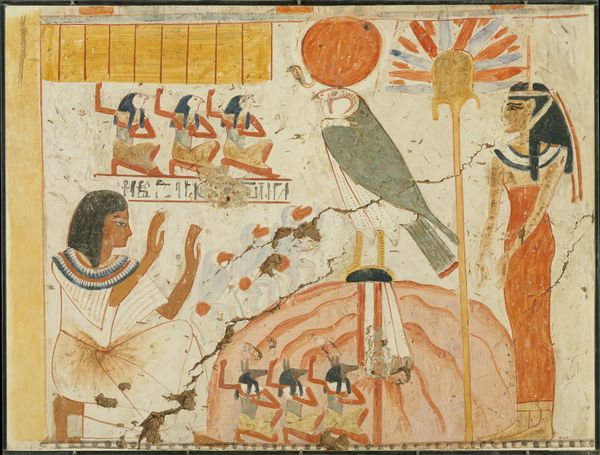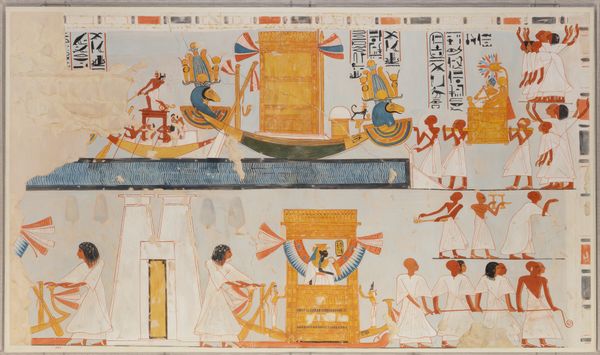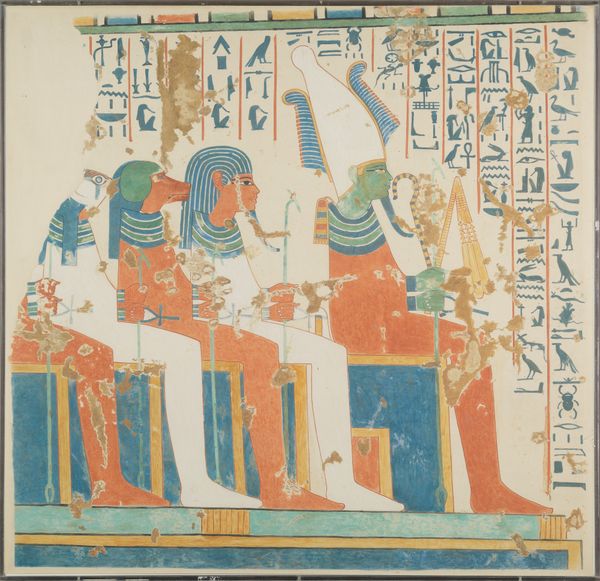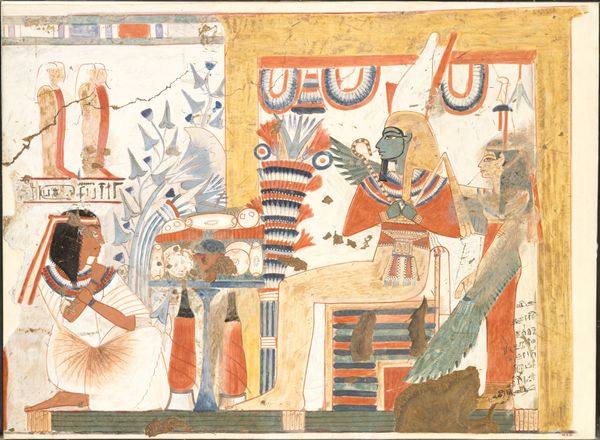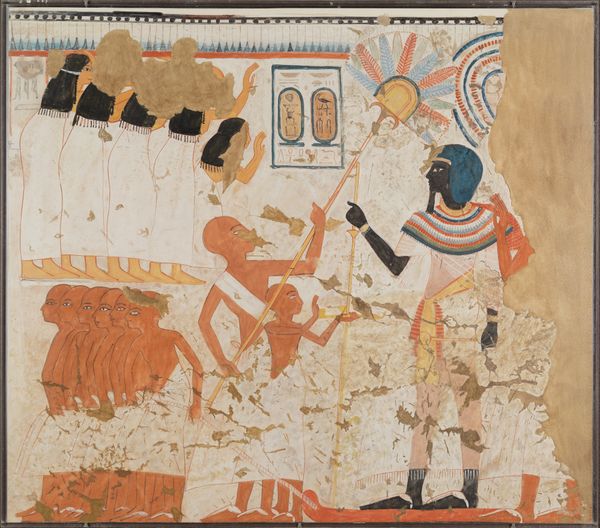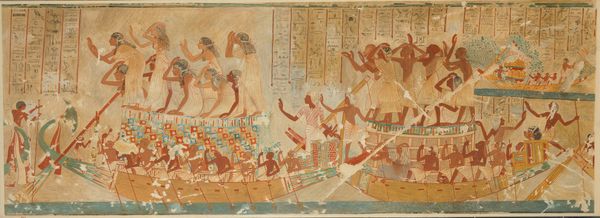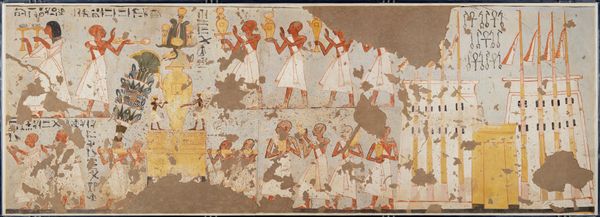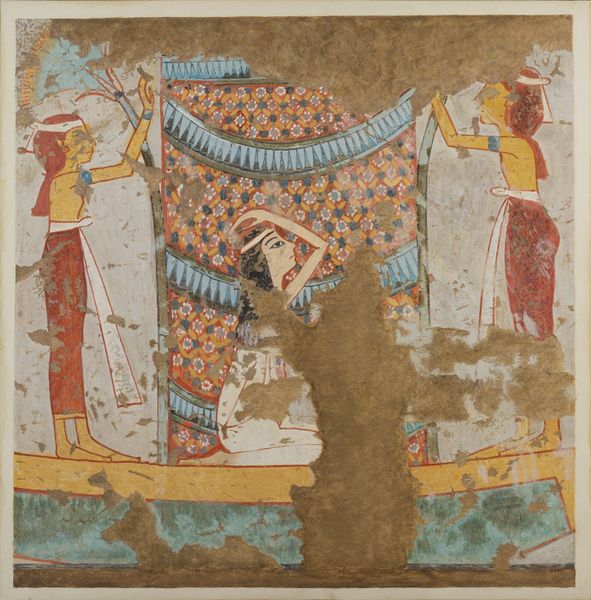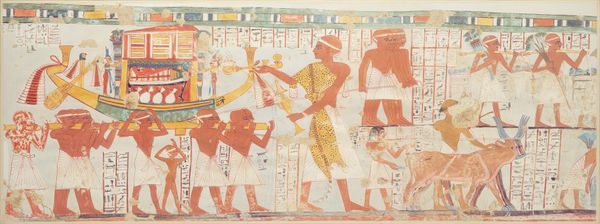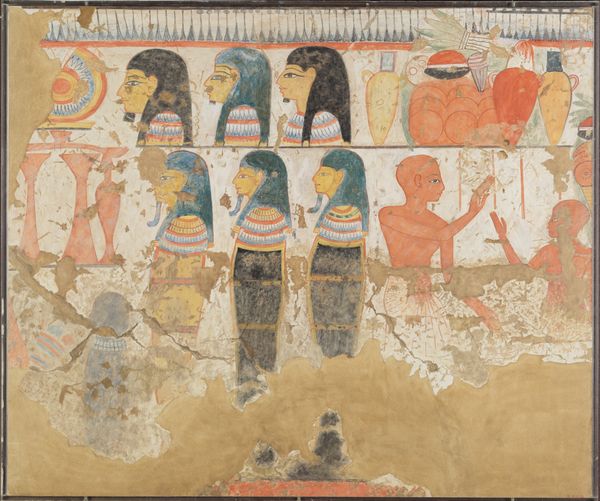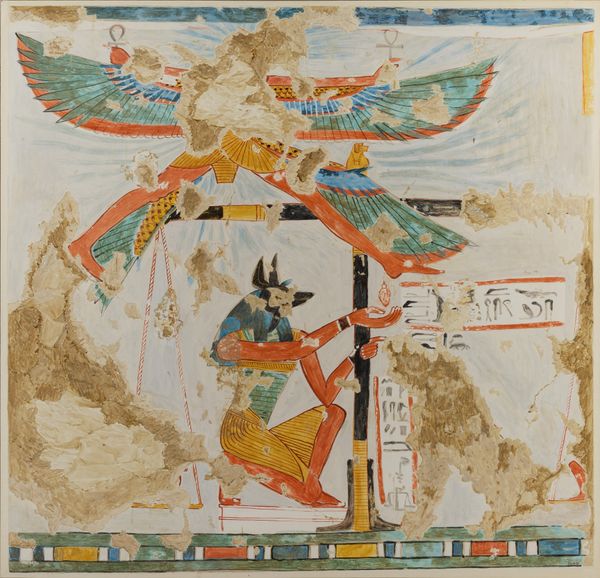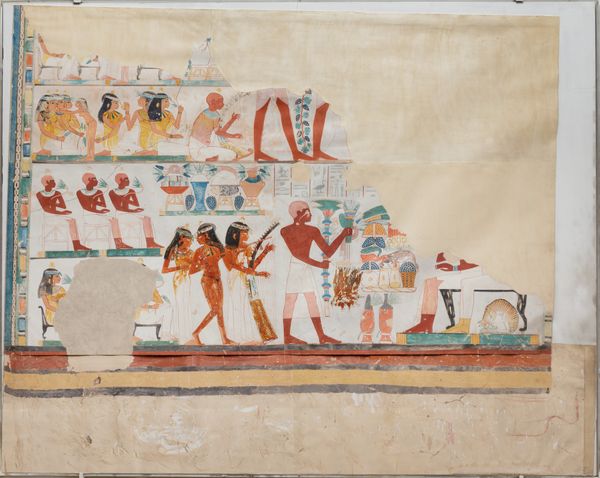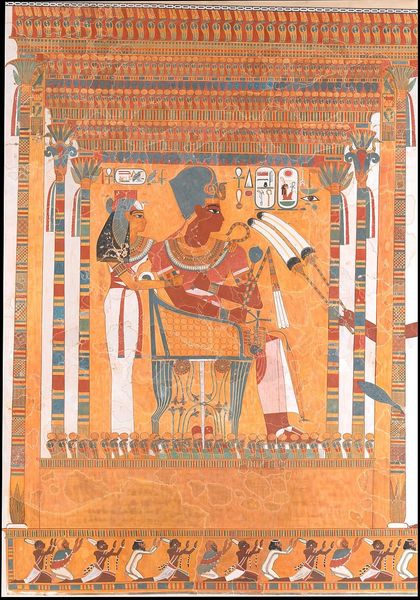
Deceased censing and libating to the deified Mentuhotep and Ahmose-Nefertari, with the Hathor cow emerging from the mountain; Tomb of Ameneminet 1295 BC
0:00
0:00
fresco, mural
#
narrative-art
#
ancient-egyptian-art
#
figuration
#
mural art
#
fresco
#
ancient-mediterranean
#
history-painting
#
mural
Dimensions: facsimile: h. 60 cm (23 5/8 in); w. 87.5 cm (34 7/16 in) scale 1:1 framed: h. 62.9 cm (24 3/4 in); w. 90.8 cm (35 3/4 in)
Copyright: Public Domain
This is a facsimile of a wall painting from the Tomb of Ameneminet, now residing at the Metropolitan Museum. We see rituals of offering: censing and libation to the deified Mentuhotep and Ahmose-Nefertari, and the sacred cow, Hathor, emerging from the mountain. Consider the Hathor cow, a profound symbol. In ancient Egypt, Hathor was the embodiment of feminine power, motherhood, and joy. The cow, as her sacred animal, represented nourishment and creation. The image of Hathor emerging from the mountain suggests a divine origin, a powerful force bringing forth life and abundance from the earth itself. We see this motif echo through time: in the Minoan frescoes of bull-leaping, where the bull represents virility and strength, or in the myth of Europa and the bull, symbolizing the founding of a new civilization. The power of the animal form to embody divine qualities engages our subconscious, triggering primal associations with fertility, strength, and the life-giving forces of nature. It’s a cycle of reverence and reinvention, resonating across cultures.
Comments
No comments
Be the first to comment and join the conversation on the ultimate creative platform.
